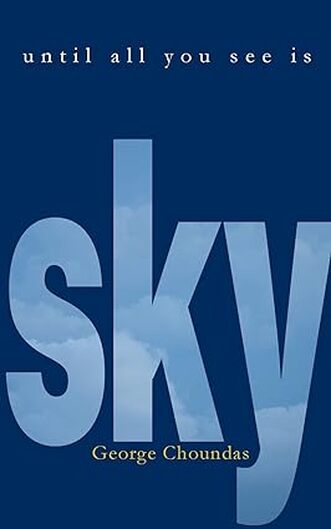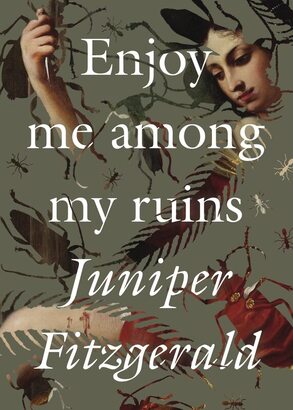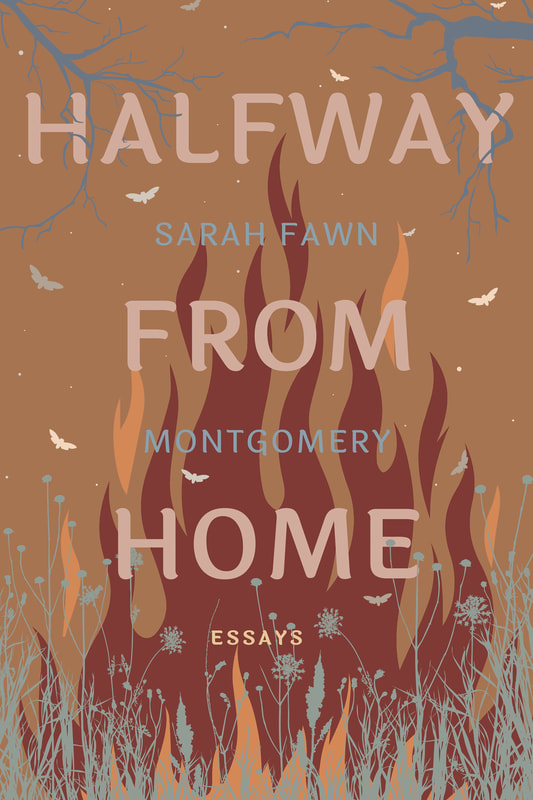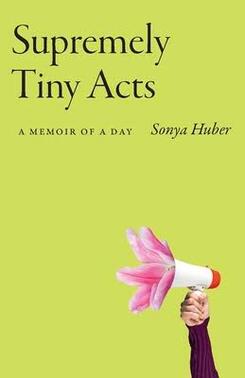As a fellow member of the Dead Parent Club™, Stephanie Austin’s Something I Might Say caught my attention because it made me want to compare notes on grief. In this brief collection of nonfiction essays describing an even more brief portion of Austin’s life, she explores the many layers of grief that overwhelmed her in just a few months' time due to back to back losses in her family. If you have experienced significant loss in your life and yearn for someone who can genuinely empathize, not just sympathize, then this collection of bite sized essays is for you.
0 Comments
“We may know the sacred; we may not impart it.”
George Choundas tosses this penetrating sentence seventy-five pages into his collection of essays, Until All You See is Sky. It’s one of the many turns of phrase that will make the reader pause and reflect. This in itself is not so shocking—good writing should, at the bare minimum, have an impact on the reader. What sets Choundas apart from the others, in my opinion, is context. Where this shrewd pronouncement is more befitting a spiritual revelation or a hard-learned life lesson, Choundas has gifted this deep and affecting statement to… baked goods.
As with any book review, I know I have an obligation to remain professional in the following paragraphs. But Juniper Fitzgerald forces me to be personal in every letter that bleeds through the choreographed motion of my fingertips on this keyboard. I almost want to conduct this as an open letter to Juniper, a “thank you” note that wouldn’t be nearly as impactful as I hope it could be. But that wouldn’t be fair to Fitzgerald or her story, or to the stories of Jean, and Cassandra, and her Grandma, and Theresa, and Diana, and Marita, and Anita, and Dakota, and Andi, and Jennifer.
Trigger Warnings: Sexual abuse/assault, sexism, sexual violence, consensual yet gore sexual descriptions.
Sarah Fawn Montgomery's Halfway from Home is an intensely personal journey that flashes a reflective mirror upon American society exposing our collective imperfections and scars. Ever searching for clarity and reconciliation, Montgomery writes: “When I fly home to California from where I live in Massachusetts, crossing time zones and great distances like a space traveler, I spy Nebraska, another former home, another me in another time. No matter when I am or where I go, I am always halfway from home” (28). Halfway from Home takes the reader on a journey through memory and nostalgia. This nonlinear style starts in the opening sequences, beginning in San Miguel, California in 1991 where Montgomery, as her childhood self, digs with her favorite pail to find treasure in a magical backyard hole. Then four paragraphs later we are taken to Morro Bay, California, 1988 where she follows her father along the beach as he walks in the sand, struggling unsuccessfully to leave the same impression as his larger tracks. Almost immediately after, we are again transported to the year 1975, where her father shapes the land with his tools of labor. Just as fast, we are back to 1993, where Montgomery buried her dead frog, and her father could not understand why she was so emotional about it. The author provides the reader with several snapshots of memory from the years 1996, 2008, 2012, 2015, and so on.
How can you write a memoir about a day? Authors generally write memoirs about entire lifetimes, not twenty-four hours. And yet, author Sonya Huber set out to record a single day in her life and all that it stood for in her newly released memoir, Supremely Tiny Acts: A Memoir of a Day.
Huber wears many hats—those of an activist, mother, wife, professor, and writer to name just a few. And in a perfect storm of sorts, Huber finds herself needing to balance all of these roles. Huber’s memoir is micro-focused on a single day. While participating in an environmental protest about climate change in Times Square, Huber is arrested. The main day chosen for the memoir, however, is Huber’s day in court following this arrest. On this same day, she finds herself grading her students’ papers (having necessarily canceled class), dealing with her rheumatoid arthritis, trying to calm her own nerves at needing to appear in court all before she is expected back to her hometown in Connecticut to take her teenage son for his driving test. |
Archives
July 2024
Categories
All
|
|
Glassworks is a publication of Rowan University's Master of Arts in Writing 260 Victoria Street • Glassboro, New Jersey 08028 [email protected] |
All Content on this Site (c) 2024 Glassworks
|






 RSS Feed
RSS Feed
